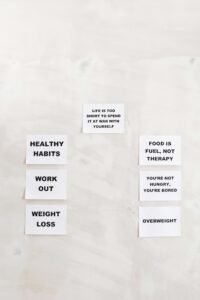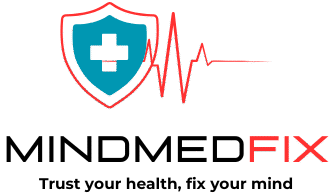Healthy living is no longer a luxury but a right in today’s life. Living life to capacity and living life in harmony require more than fleeting motivation—they require mastery of the self, awareness of the self, and intentional action. This comprehensive guide illustrates how to create effective health and wellness goals, track progress, and ultimately attain satisfying outcomes.
Why Set Health and Wellness Goals?
Having wellness goals adds purpose and meaning. Whatever is your reason to lose some weight, feel healthier mentally, or adopt daily healthy routines, having a goal adds purpose for the habits to become significant. New year’s resolution for healthy living without planning becomes an unrealistic goal.
Advantages of Having Wellness Goals:
- Builds planning to daily wellness habits;
• Motivates through measurable success;
• Enables lifetime physical and mental well-being
• Promotes self-care and personal responsibility;
• Fosters action in the direction of overall lifetime well-being.
Personal health objectives where everything begins. They are less number goals—a number on the scale, for example—than about establishing a way of living that is an area of strength, happiness, and personal growth. Goals are really a guide map to adhere to by on your path to wellness.
How to Set SMART Health and Wellness Goals
The SMART system, and perhaps the most perfect system of goals, is Specific, Measurable, Achievable, Relevant, and Time-bound. These five elements are what make goals realistic and achievable.
Example SMART Goal:
“I will walk daily for 30 minutes, five days per week, for three months to increase cardiovascular fitness.”
Some other healthy, realistic wellness goals examples include:
- “Drink 8 glasses of water a day;”
• “Sleep 7 or more hours every night;”
• “You prepare five weekday dinners at home;”
• “You restrict screen time to 2 hours or less per day.”
Vague plans are turned into very detailed action plans when becoming SMART goals. It is yours to do and it decreases burnout, stress, and overworking a task that can be done later.
Types of Health and Wellness Goals
Wellness goals can be very varied based on individual needs. Common categories are:
Physical Well-being Objectives:
- Fitness goals, e.g., “run a 5K” or “three times a week, strength training;”;
• Nutrition goals, e.g., “cut added sugar” or “vegetables; leave/”;
• Rest goals, e.g., “have a regular bedtime;”;
• Sourced flexibility and range of motion, e.g., “stretch for 10 minutes daily.”
Mental Health and Wellness Goals
- The incorporation of mindful activities such as controlled breathing or meditation;
• Computer programs for writing or mental health;
• Psychotherapy sessions or psychotherapy groups
• Gratitude by journaling three things you feel thankful for each day.
Emotional and Social Wellness Goals:
- “Call a loved one once a week;”;
• “Join a local book or fitness club;”;
• “Draw healthy boundaries to stay mentally clear;”;
• Exercise presence of mind in initiating dialogue and active listening.
Preventive Health Goals
- Regular medical check-ups prevent contracting;
• Active scheduling and regular dental cleaning
• Regular health screening and vaccination;
• Control of chronic diseases through regular checking and follow-up medically.
Goal setting in more wellness areas leads to greater satisfaction of overall and long-term improvement in one’s wellbeing.
Optimal Wellness Goal Tracing Techniques
Trace the progress so that there will be responsibility and motivation. Some of the techniques that can be utilized are as follows:
-
Journaling

Keep a journal of your goal, daily accomplishments and frustration. Keeping track of energy level and emotional response could be wonderful feedback too.
-
Fitness Tracking Apps:

Cross-over apps like “MyFitnessPal,” “Fitbit,” and “Nike Training Club” let you monitor exercise, nutrition, and health data. These computer applications usually include reminders and assessment, and they’re wonderful consistency-busters.
-
Wearable Devices

Smartwatches and activity bands monitor sleep, heart rate, and steps. Stress monitoring and guided breathing augment real-time feedback in a synergistic wellness strategy.
-
Habit Trackers

A calendar or computer-based habit-tracking program delivers visual feedback for consistency. Wipe-outs reinforce repeated efforts and produce the feeling of success.
-
Weekly Check-Ins

Spend time weekly connecting and checking in. Ask yourself: What was working? What was in my way? Revise your plan. Continuous reflection increases resilience and flexibility.
Tools and Resources to Stay on Track
The right tools in your toolbox make it simpler to stay on track.
Best Fitness and Wellness Apps: 
- MyFitnessPal: Ideal for monitoring food and diet;
• Nike Training Club: Provides workout plans with step-by-step directions
• Headspace and Calm: Healthy, active mind;
• Sleep Cycle: Monitors and enhances sleep quality;
• Strava: Ideal for monitoring running and cycling workouts;
• WaterMinder: Water intake reminders.
Community support:
- Online forums like Reddit support groups (e.g., “r/loseit,” “r/fitness”);
• Facebook health challenge and support groups;
• Professional wellness coach or accountability buddy
• Live group classes and meetups for socialization and motivation.
Podcasts and Books
- “Atomic Habits” by James Clear: Habit creation bible;
• “The Power of Now” by Eckhart Tolle: Promotes to be present and conscious;
• Podcasts like “The Mindbodygreen Podcast” and “Ten Percent Happier” provide witty tips with health advice.
Long-term Well-being Tips
Pure long-term energy spikes, unsupported by routine daily practice, ensure excellent long-term health. Always keep in mind:
1. Start Small: 
Begin small—5 minutes’ worth of walking, an additional glass of water, or one healthier meal per day. They are starters that pay off over the long haul.
2. Change Your Identity
Don’t tell yourself, “I’m going to lose weight.” Tell yourself, “I am a healthy, wellness person who takes good care of himself or herself.” Being too hard on the goal is how you become successful with change.
3. Toast Milestones
Reward every victory, no matter how small. Whether it is surviving exercising and hydration victories throughout the week or surviving everyday victories, treat yourself.
4. Be Flexible:
Be flexible with your goals if necessary. Life does change, and your health plan should change too. Healing is better than perfection.
5. Re-Assess Periodically
Check your goals quarterly. Ask yourself: Are they still sufficient? What changed? It is good to remain consistent with your values and present life circumstances.
6. Develop a Personal Wellness Vision
Simply write down in a few sentences what wholeness looks and feels to you. Your vision is your north star in low energy.
Overcoming Common Obstacles
No time
Bend small health habits into habits of daily life. 10 minutes of walking or mindfulness >> nothing. Habit stack—i.e., stretch after brushing teeth.
Low Motivation
Get back to your why. Find communities or challenges. Action comes before motivation, not the other way around.
Unrealistic Goals
Break monolith goals into a few steps. For sustained effort, not fast progress.
Perfectionism
Be supportive of wanting to get it right, not necessarily perfect. Don’t cheat or miss a workout session occasionally. Simply put it aside and start fresh without guilt. With every step in the right direction, you’re that much closer to your final destination.
Plateauing
When progress appears to slow to a snail’s pace, shake it up—shake something new, alter what you’re putting in, or go back to a former good habit.
Real-Life Inspiration: Mike’s Wellness Transformation
Mike began small: “walk for 15 minutes a day” and “reduce the soda.” He built up to these habits over time, added strength training, and began tracking meals. He lost 60 pounds in 18 months and significantly enhanced cardiovascular function and mental clarity.
Mike had obstacles—a twisted ankle, holiday travel tourist traffic, and an occasional case of self-doubt. But in sacrificing perfection for consistency, he succeeded. His experience is a testament that slow growth over time can be achieved.
Conclusion: Begin Your Journey of Wholeness Today
The path to achievement in seeking health and well-being objectives is not perfection but one of steadfast dedication, self-awareness, and flexibility. There is potential for everyone to enjoy a healthier, happier life who has the right attitude, support, and resources.
What are you doing today for better? If it’s for better attitude, starting a fitness regimen, or putting a method of well-being in place to follow, today is your day.
Here’s the catch: You don’t need to have it all to begin with. Get your SMART goals, monitor your progress, and enjoy the process. Your path to lasting bliss and good health begins with one choice—take care of yourself.
Make that choice begin today.
Read About How Stress Impacts Your Health and How to Deal
Checkout our Facebook Page


